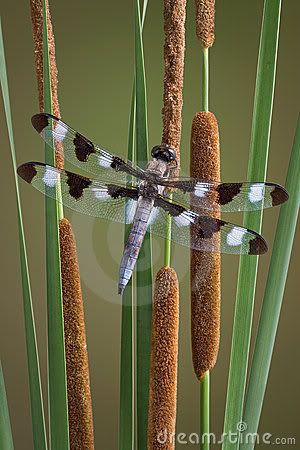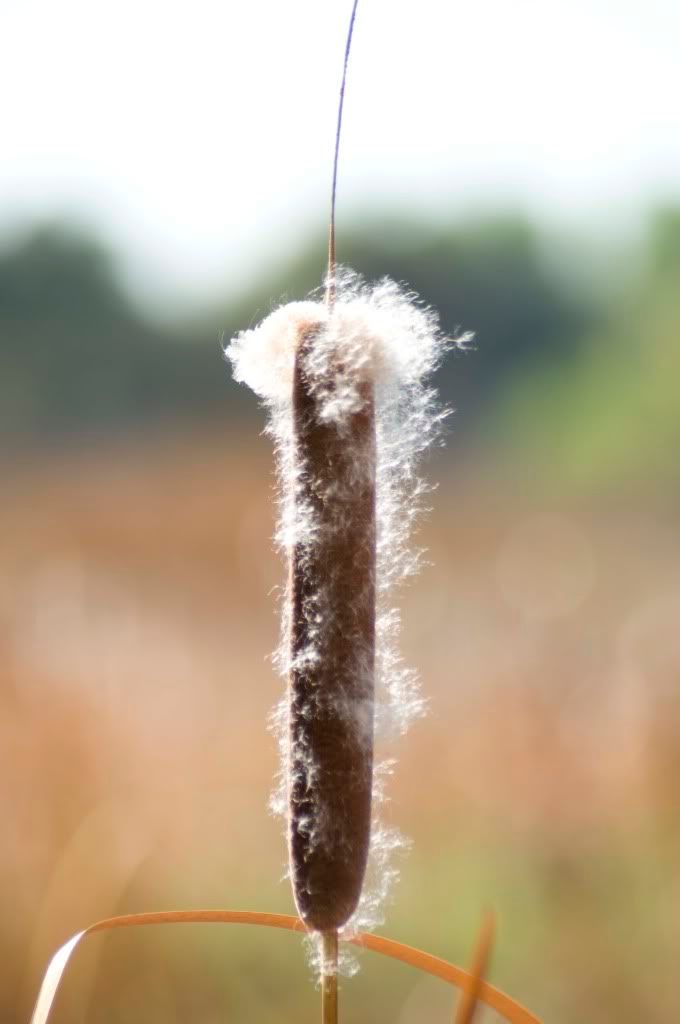
I have posted on Cattail before but since this is the time of year for harvesting Cattail I would like to bring it to the forefront.
Whenever you came across cattails, did you ever stop to think that they are edible? Would you eat them if you were hungry, or are you aware of how this herbaceous plant has been used for centuries in diverse and interesting ways? Ah, then let's discuss a few varieties, and find out a little bit more about how useful this plant is, as well as finding out how this edible plant is consumed.
There are a few classifications and well-known names of the cattails. Some of the more standard names of cattails include:
the narrow-leafed cattail [Typha angustifolia] the wide-leafed cattail [Typha latofolia] the common cattail [Typha domingensis] the hybrid or white cattail [hybrid, crossbred between Typha angustifolia and Typha latofolia T x glauca]
cat-o-nine tails southern cattail Cattail are likely one of the most recognizable of the wetlands plants. The two most popular species are the Typha angustifolia (narrow-leafed cattail) and the Typha latifolia, (broad-leaved cattail) which are found across North America. The T. angustifolia does not go as far north as the T. latifolia and the T. domingensis grows more in the southern parts of America, as well as into South America.
Typha plants are monoecious [having both male and female reproductive organs] and are pollinated by the wind. They are often one of the first wetland plants to colonize areas of newly exposed wet mud. The T. or Typha plants grow in dense stands (many all together) and are found growing along marshes, ponds, canals, brackish water, reservoirs, streams and lake margins. The root system of this plant helps prevent erosion from waves created by boats or wind. The cattail provides an important habitat for many species of water fowl such as ducks, geese, marsh wren, mallards, yellow headed and red-winged blackbirds, as well as making a home for frogs, salamanders, deer, moose, elk and raccoons.

Some people think of cattails as weeds that are a nuisance, however, they perform important functions that help make the wetlands healthy. They filter runoff as it flows into the water, which helps reduce nutrients as well as reducing mud that enters into the wetlands from the surrounding land. Artificial (man-made) and developed wetlands that have cattail improve water quality problems, addressing such things as various and multiple toxins that challenge wastewater and soil, heavy sediment deposition and nutrient enrichment. The presence of cattail can change levels of chemicals like fertilizers and pesticides, heavy metals, drugs and nitrates in the soil and water, in an inexpensive way.
The cattail, a wetland plant , is a rhizomatous perennial from the Typhacaea family. They are stiff, tall plants that grow from 3 to 10 feet in height, with green, willowy, blade-like leaves [similar to tall blades of grass] The brown, cyclindric and elongated female flower, is what is so distinctive with the cattail and gives this plant its name. Now, let's see what the similarities and differences are with a few species of the cattail.
Narrow leaf cattail [Typha angustifolia] The inflorescence of this species has staminate flowers (above) and pistillate flowers (below) and is medium to dark brown, spike-like and cylindrical. The male flower [a narrower, yellow stalk] grows just above the female flower, but tends to disappear once it has done its job. The leaves grow from the base of a straight, central stalk and have pointed tips and long, straight margins that resemble long blades of grass. The narrow leaf cattail will reproduce by seed and also by rhizomes. A rhizome is a horizontal plant stem with shoots above and roots below, serving as a reproductive structure.
The seeds are contained in the spikes. The fruit seed period begins in the spring and ends in summer. Each spike contains from 117,000 to 268,000 miniscule seeds. This spike bursts open under dry conditions, releasing the fruits. The seed vessels opens quickly when the fruit comes in contact with water, releasing the seed which then sinks. The fruits will often fall to the ground in wet weather, rather than being dispersed by wind.
The narrow leaved species is smaller than the broad leaved species. Its leaves are thinner and darker green, extending beyond the spike. The male and female portion of the narrow leafed species is separated by an inch (approximately) of bare stem. The T. angustifolia occurs in deeper water than the T. latifolia [broad leaf cattail] and has fewer and larger rhizomes, which enables it to grow in deeper water.
Broad leaf cattail [Typha latifolia] This species grows up to 10 feet tall and is found in areas of shallow water or seasonal flooding, or along the shores or margins of deeper water. This wetlands plant has become widespread in North America, South America, Europe, Asia and Africa, wherever weather is tropical or temperate.

The broad leaf cattail is an upright, rhizomatous, aquatic (or semi-aquatic) perennial herb, which produces sexually or asexually. The rhizomes are 3 -4 inches below the soil surface and can grow up to 27 inches long, with a diameter of 0.2 1.2 inches. Asexual reproduction occurs through the rhizome system, whereas sexual reproduction is carried out through seed dispersion and seedling establishment. The fruit seed period begins in late spring and lasts until the fall.
Common Cattail [Typhaceae] The common cattail is a native, perennial plant that grows to heights of 4-9 feet tall. It has flowering stalk and 6 or more leaves. The leaves grow up to 7 inches long and 1 inch across. They have parallel leaf venation and are flat, hairless and green to bluish grey in color and originate from the base of the plant. It has a flowering stock which ends in a spike of staminate flowers [male] and a spike of pistillate flowers [female]. Every staminate flower bears 4 grains of pollen. Once the pollen is released, the staminate spike shrivels up. The root system has thick starchy rhizomes and fibrous roots.
Cattails can reproduce by rhizome [roots that creep] or seed made by their flowers. Pollinated flowers will develop into seed heads which are carried away by the wind. Cattails can also spread through their root system. The narrow leaf cattail, the broad leaf cattail and the common cattail have characteristics that overlap, so identifying these wetland plants can be challenging. Typically, the common cattail is larger in size. One other difference is that the staminate and pistillate spikes of common cattail are adjacent to each other or separated less than inch. On the other hand, the staminate and pistillate spikes of the narrow leaf cattail are separated by more than a inch; but normally by a few inches. The cattail family prefers shallow, flooded conditions. During growing season, cattails like to be constantly wet [saturated soil].
The Edible Uses of Cattail You may just wrinkle up your nose at the thought of eating any part of cattail, but before you toss the idea away, take a look at some of what you can do with this plant. Keep this information filed away somewhere because if you are ever out in the wilderness, thirsty and hungry, spotting cattail is not only a sure sign of water, but knowing some of the following data just may keep your hunger pains away. There are also medicinal uses of cattail.
Believe it or not, every part of the cattail is edible but you must be careful not to mix cattail up with poisonous plants such as irises. The tender, young shoots are cut from the underground stems [rhizomes], in the spring when they are 4 -16 inches long. The base of the stem, where it attaches to the rhizome, can be boiled or roasted like potatoes. It is interesting to note that the rhizomes are richer in starch than potatoes. The young flower stalks can also be eaten raw, baked, boiled or steamed. The core of the rhizome can be ground up and used as flour, as it is a rich source of starch. According to a Harrington 1972 report, one acre of cattails yields approximately 6,475 pounds of flour. The Native American Indians made bread and other baked goods from the flour', which contains about 80% carbohydrates, 6% - 8% protein and is abundant in minerals and vitamins. The pollen can also be a great supplement for cornstarch.
The female part of the cattail can be eaten like sweet corn, when the stalk is immature and green. The rhizomes tender young shoots can be peeled and eaten as a vegetable or in salad. The Russians named the young shoots, Cossack asparagus'. The roots were used to treat intestinal problems and malaria.
There are a myriad of things that the cattail has been and can be used for. The Native American tribes used cattail leaves and wove them into sleeping mats and waterproof mats for the sides of their wigwams or lodges. The root stalks can be boiled or mashed, and used as a pasted for burns, scabs, sores, boils, inflammation, wounds and smallpox sores.
The dried leaves can be used to make chair seats, mats, baskets, rafts or floats. The roots were most often used in treating intestinal maladies and burns. The fluffy seeds that look almost like down, are used in coats, pillows, mattresses, quilts, dolls and life jackets. It was also used to dress wounds, and provide tinder. Dried cattails are an effective treatment for burns.
The benefits and uses of the cattail plants are quite numerous and very impressive. So the next time you pass by some cattails, stop and think of all the diverse uses for it; especially if you are feeling rather hungry!
If memory serves me the Native women also used the 'fluff' for menses and it was also used in parachutes when we first began to use them?
ReplyDeleteLove reading this today Beloved Sister!
A'HO!
xoxoxo
True words sister. yes indeed they did! Love you so.
ReplyDelete